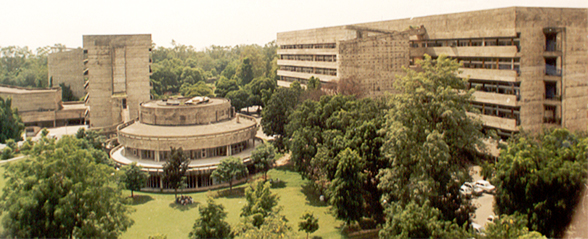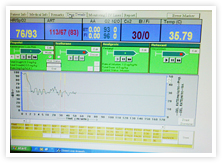 |
        |
 |
| IV Alert |

 Anaesthesia practice in operation room primarily involves giving anaesthetics drugs to patients to produce unconsciousness and ensuring safe surgery without any untoward incidence. Some of these processes and procedures are fixed and predetermined and some are based on the patients response to the interventions like altering anaesthetic drug infusions or inhaled concentrations, giving drugs and infusions to maintain haemodynamics etc. The processes which are repetitive and require constant attention of the anaesthetist are always prone for human errors. Putting an intravenous line, checking the machine and equipment, monitoring, giving anaesthetic drugs, titrating the drugs, securing an airway, maintaining the respiration and haemodynamics and giving intravenous fluids and blood products, keeping an eye on the surgical field and monitors, altering the dosages of potent drugs based on patients requirement and responses, are some of the activities which an anaesthesiolgist is supposed to be doing routinely day in and day out while anaesthetizing the patients. Though the incidences of errors in these may be low, the risk involved is high. This has been shown and proven number of time in different industries and is the reason automation has been adopted as safety factor in these industries. One such example is airline industry. Induction, maintenance as well as recovery from anaesthesia can be compared to take off, flying and landing of the aero plane. In view of this there is  need to automate some of the processes related to anaesthesia so that the human error can be minimized, distractions from routine repetitive activities can be minimized and anaesthetist can have more time for direct patient care. The Department of Anaesthesia and Intensive Care at PGI has made great strides in developing automated anaesthesia system that is predicted to be the future of standard anaesthesia care. need to automate some of the processes related to anaesthesia so that the human error can be minimized, distractions from routine repetitive activities can be minimized and anaesthetist can have more time for direct patient care. The Department of Anaesthesia and Intensive Care at PGI has made great strides in developing automated anaesthesia system that is predicted to be the future of standard anaesthesia care.With the development of computers attempts at automating the delivery of anaesthetics and related drugs were made using the apparent relationship between the depth of anaesthesia and changes in the EEG to control the delivery of intravenous anaesthetic drugs. Investigators used simple electronic circuits with analog systems for data acquisition and conversions to mechanical outputs for the delivery of a drug. With the advances in microprocessor technology and miniaturisation of electronic sensors the EEG signals picked from the head of the patients can be used for development of objective parameters of measurements of depth of anaesthesia. As anaesthetic requirement variability requires the titration of drugs based on patients response these objective anaesthetic depth monitors have hugely opened the possibility of automation of anaesthetic delivery based on these parameters and probability of closing the loop of this drug delivery has increased recently. Automated drug delivery consists of computer programs designed to maintain a targeted effect by adapting/ varying the administered amounts of drug based on the feedback of effect of the drugs on the specific body functions which it has been given to alter. A closed-loop system is the ideal means of automated drug delivery. A closed-loop system senses the level of output, feedbacks this information, compares it to a set point that defines the desired output level and uses the difference to push the output towards the set point. Such systems are referred to as feedback control systems. Because of more frequent sampling of the control variable and more frequent changes to the rate of drug delivery than with manually delivered anaesthesia, the stability of the control variable may be greater. At the same time, the dose delivered is customized to meet the exact requirements of each patient, thereby overcoming the problems of inter-individual differences and differing levels of surgical stimulation. The advantage of closed-loop anaesthesia delivery system is that the control is continuous and responsive that may improve the quality of care as compared with intermittent control practiced routinely. Recovery times and the risk of inadvertent awareness may thereby be decreased. The advantages of closed loop systems is more apparent in complex situations like open heart surgery where not only a large number of drugs are being administered simultaneously but their requirements are also be changing from minute to minute basis. A closed loop anaesthesia delivery system (CLADS) has been developed at PGI with the uniqueness of using simple syringe pumps to control the intravenous anaesthetic drug delivery and for the first time using closed loop administration of anaesthetics both for induction as well as maintenance of anaesthesia. It has been in use since last more than 10 years and has been used on more than 6000 patients including patients with cardiac, liver and renal dysfunctions both for cardiac surgery as well as non cardiac surgery and its usefulness and safety has been well proved in different groups of surgical patients (see references (hyperlink to references) . An important advantage is that in a busy OR, the anaesthesiologist can utilize his attention and time for other important activities like haemodynamic control (control of blood pressure and heart rate), doing echo evaluation of patient, airway and respiration management and other non anaesthetic drug titrations. This computer controlled anaesthesia has been used in PGI for challenging open heart surgeries, major non-cardiac surgeries and also in high altitude. Patent for the system has been filed in USA, Europe and India (United States- Appln No 12/683.000 (PCT/IN08/000674), Europe- EPAppln. No.1 08840169.0 (PCT/IN08/000674), India- Patent Application No. 502/DEL/2003 2158/DEL/2007). During last 10 years the system has been continuously refined and upgraded to incorporate a number of safety features including hemodynamic control as well as user friendly options of using both intravenously as well as inhalational anaesthetic agents depending upon users choice and interchange of these anaesthetic agents during active anaesthesia. IAADS (Improved Anaesthetic Agent Delivery System), an improved version of CLADS with a number of safety features of hemodynamic control and which can administer isoflurane7 and muscle relaxants besides propofol in adults and children not only encompasses the induction and maintenance of intravenous anaesthesia but also controls the muscle relaxant delivery based on the feedback from neuromuscular junction monitoring and analgesic delivery based on the preset rate of delivery along with as and when required based on the hemodynamic and EEG responses. The ultimate goal for closed-loop controllers is their general acceptance in clinical practice for which multicenter study Multi-centric evaluation of Closed loop Anaesthesia Delivery System funded by Department of Information Technology (DIT) has been completed successfully on 250 patients in six participating centres- Sir Ganga Ram Hospital, New Delhi, Government Medical College and Hospital, Chandigarh, Dayanand Medical College and Hospital, Ludhiana, SNM Hospital, Leh, GMCH, Patiala and PGI, Chandigarh. The result of the study was encouraging as the anaesthesiologists in all the participating centres found the system user friendly after a brief initial orientation to handle the user-interface (results under publication). The scientific results have once again re-iterated the efficacy and safety of the system. Click here to view the CLADS prototype / product displayed at MIXiii 2014 Israel innovation conference at Tel Aviv, Israel. 20-22 nd may 2014. |